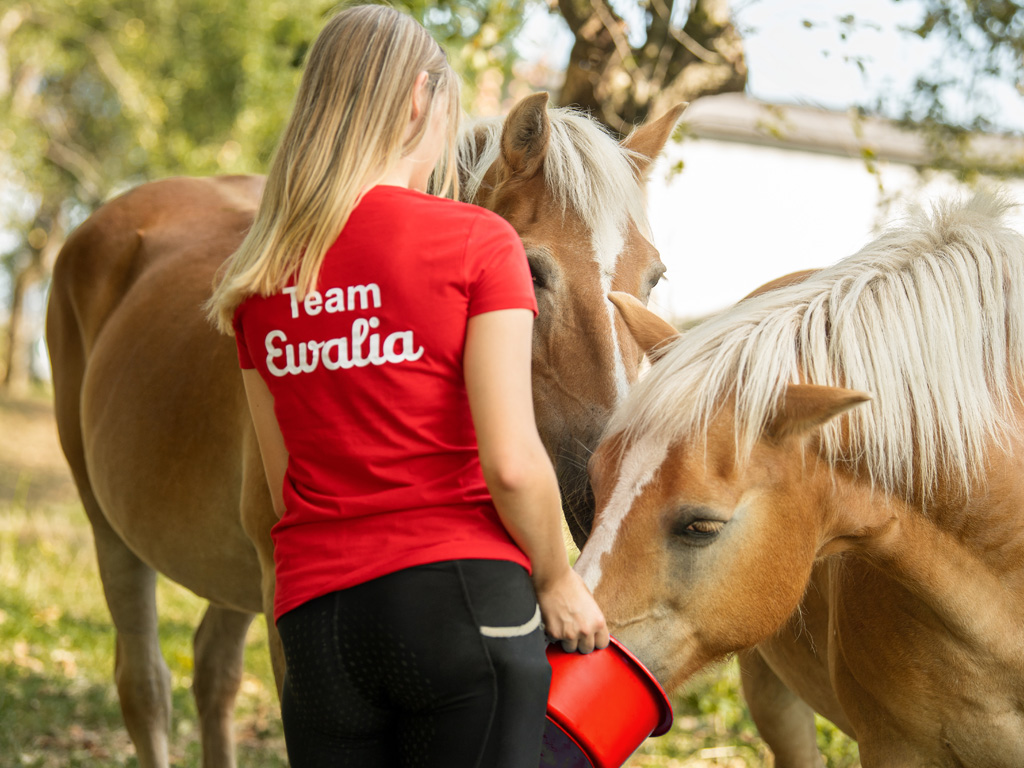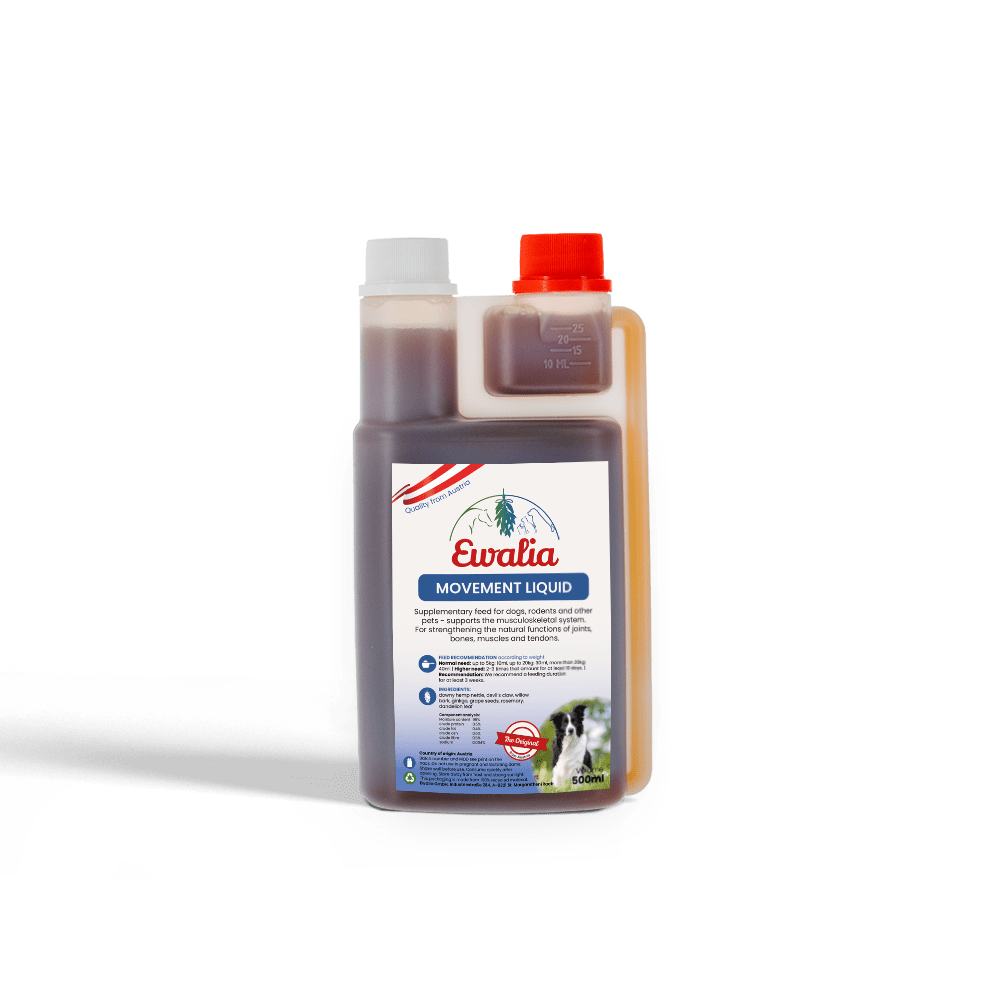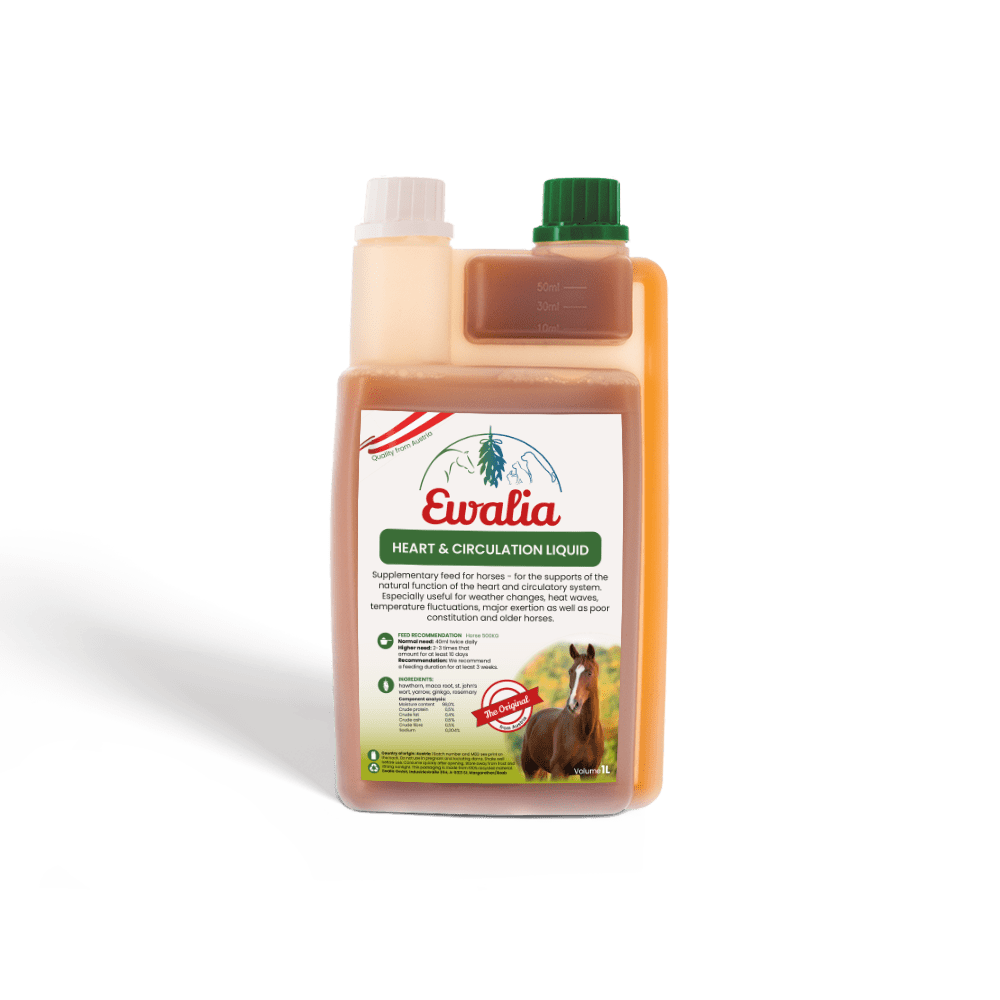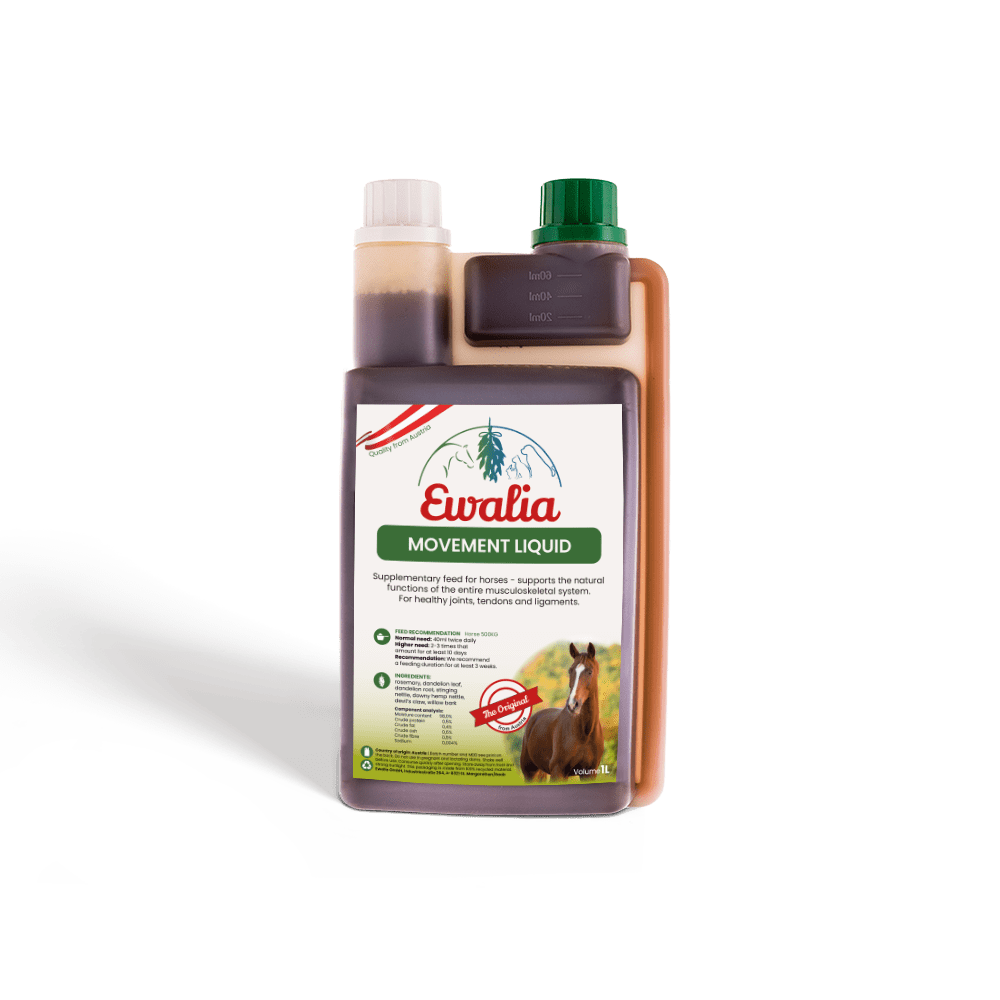Rosemary
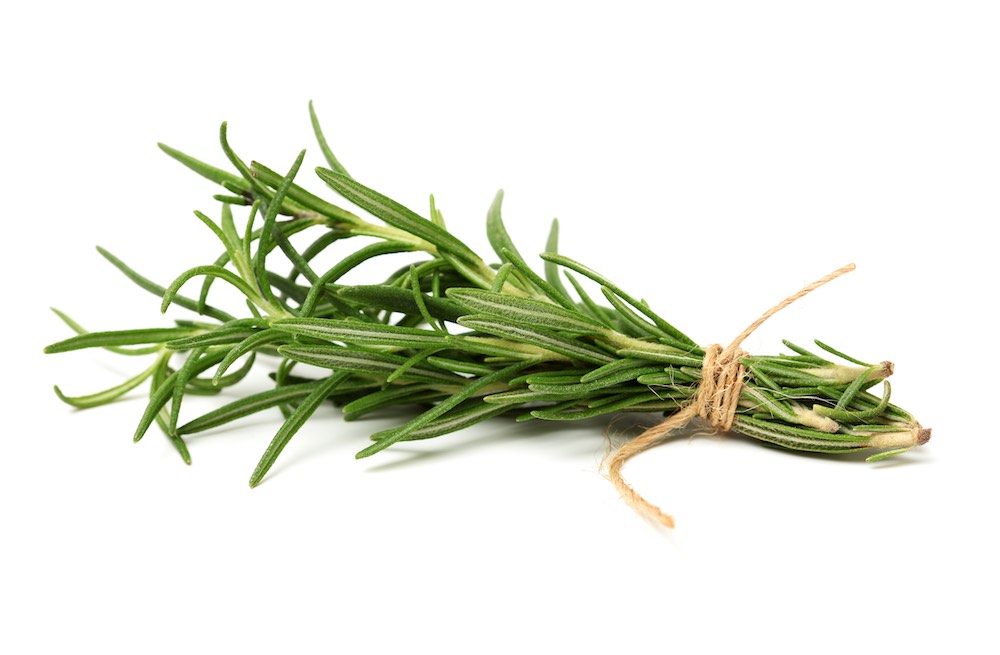
The stimulating and invigorating effects of the aromatic rosemary plant (Salvia rosmarinus, Rosmarinus officinalis) have long been used in veterinary medicine. This well-known Mediterranean herb's valuable substances promote blood circulation and are effective in helping weak cardiovascular systems as well as musculoskeletal systems.
Where does rosemary come from, and what does it look like?
Rosemary loves sunlight! This aromatic herb is originally from the Mediterranean region, where its range extends all the way to Portugal. The name "rosemary" is derived from the Latin "ros marinus" (dew of the sea). In northern lands, rosemary can survive winters outside only under certain conditions. This Mediterranean plant may be hardy, but it's not winterproof. This means that it can withstand low temperatures around the freezing point but requires protection for lower temperatures below freezing.
Botanically, rosemary is described as a densely branched, evergreen subshrub. It can grow to a height of two metres. In colder regions its growth is limited to about one metre in height. The shrub begins to lignify with age, whereby older branches display an exfoliating bark.
The top of its narrow, linear leaf is dark green and has a leathery coating. The underside is white and grey, with fine hairs. The leaf has a slightly curved-under shape which is characteristic for plants which have adapted to dry, hot climates; this shape protects the leaf from drying out. The topside of the leaf has oil glands which release essential oils when crushed.
Rosemary belongs to the genus Salvia and is related to sage, lavender, and thyme. In Central Europe, it bears many panicled blue flowers between March and May. Some varieties also have white, pink, or light purple flowers. The flowers make way for little brown nutlets which develop into single-seeded mericarps as they mature.
In aromatherapy, rosemary has three different chemotypes. Rosemary essential oil basically consists of a composition of various aromatic including camphor, pinene, and eucalyptol, as well as other terpenes, flavonoids, phenolic diterpenes, and tannins such as the well-known rosmarinic acid. An essential oil's chemotype refers to the different concentration of its individual ingredients, depending on the origin of the raw materials used. Rosemary oil from Spain, for example, is considered to be especially high in camphor whereas rosemary oil from North Africa is prized for its particular delicacy. In 2020, rosemary was named aromatic plant of the year by Austria's Association for Aromatherapy and Professional Aromapractitioners.
What is Rosemary used for?
Rosemary has a slightly bitter, resinous, and highly aromatic taste and is a staple of Mediterranean cuisine. In the Middle Ages the plant began to be known in Central Europe and found its way into local recipes. Its digestive benefits have also made it popular as a spice for hearty dishes.
The cultivation of rosemary goes as far back as antiquity. This shrub was dedicated to Aphrodite, the goddess of love, and played an important role in many ceremonies as decoration or incense. Rosemary is still used today in bridal flower crowns to keep evil spirits away from the newly wedded.
The plant's presence north of the Alps began in monastery gardens where, similar to frankincense, it was cultivated for use as incense. According to one legend, the famous "Hungarian water" was produced by alchemists for Isabella Jagiellonica, Queen of Hungary in the 14th century. It is still considered the world's oldest anti-ageing elixir. One of the main ingredients in Hungarian water is rosemary essential oil. Rosemary oil is also found in the well-known Eau de Cologne. Rosemary oil and rosemary essential oil are used in many other cosmetics. The circulation-enhancing properties of rosemary make it ideal for use in body creams, improving connective tissue and reducing cellulite. It can also be found in bath products and as a fragrance in countless formulas. Rosemary and rosemary oil are also used in preventive hair loss treatments and shampoos, as they can also stimulate the scalp's blood circulation and regulate its oil balance.
For medicinal uses, the leaves (Rosmarini folium) are harvested and then used either fresh or dried. Rosemary can be taken as a freshly pressed juice, as tea, powder, or tincture. The essential oil in rosemary is obtained through steam distillation.
Rosemary as a medicinal herb
Rosemary has long been used as a medicinal herb. It relieves cramps and promotes blood circulation. The European Scientific Cooperative on Phytotherapy (ESCOP) recommends rosemary to improve liver and gallbladder function and treat dyspeptic complaints. It is also used as a mild antiseptic and for cardiovascular complaints. Externally, it is used to promote wound healing and to relieve rheumatic ailments. Rosemary has long been used in many preparations such as salves, bath products or massage oils to treat rheumatic ailments, muscle and joint pains, circulatory ailments, and to promote blood flow. The German association "NHV Theophrastus" named rosemary its medicinal plant of the year in 2011. In the Middle Ages, healers recommended the herb for digestive problems, worm infestation, liver and spleen complaints, and to strengthen brain power. It also served as a remedy for epilepsy. In 1543, Leonhard Fuchs wrote that rosemary "is good for trembling and lame limbs." It also gained importance as an ingredient for smelling salts, which became fashionable against fainting and attacks of weakness. In folk medicine, rosemary is still used today to strengthen the heart and to treat headaches and exhaustion. Rosemary's use in aromatherapy is as a stimulant and to improve concentration. The oil is used to stimulate circulation and metabolism, but also to treat nervous complaints, mental weakness, lethargy, exhaustion, and mental anxiety. It should be noted that rosemary has different chemotypes depending on where it was grown.
Rosemary ointments have long been used to treat musculoskeletal system issues in veterinary medicine. In his 1716 book on equine medicine, Johannes Deigendesch recommended rosemary for "all dislocations, shortened veins and injured nerves". Its essential oil is used for pungent lotions for circulatory disorders, lameness, and paralysis. It is also said to treat horses with skin-irritating pests like mites.
What substances are contained in rosemary?
Rosemary contains rosemary essential oil, composed of various aromatic substances like camphor, pinene, and eucalyptol, as well as other terpenes, flavonoids, phenolic diterpenes, and tannins such as the well-known rosmarinic acid. The exact composition depends on the plant's chemotype. The essential oil is primarily responsible for the plant's antibacterial, antifungal, and blood circulation promoting effects. In small doses, rosemary oil stimulates the nervous system.
What can rosemary be used to treat in horses and dogs?
If your horse suffers from poor circulation due to heat or humid weather, you can get his circulation back into swing with rosemary. Rosemary's valuable substances strengthen the cardiovascular system and promote blood flow. Especially in combination with hawthorn, rosemary can stabilise and maintain cardiovascular function.
The plant's stimulating and circulation-promoting properties are beneficial to equine and canine musculoskeletal systems and help animals with muscle and joint problems to enjoy more mobility and better quality of life.
Adverse effects:
It should be noted that rosemary essential oil should never be applied directly to mucous membranes, wounds, or near the eyes. Seek medical advice before using rosemary to treat animals with gallbladder ailments, liver diseases, open wounds, fever, severe infections, cardiac insufficiency, or severe cardiovascular diseases. Do not administer rosemary essential oil to animals with high blood pressure or that are pregnant, as it may induce labour. When taken internally, very small amounts of rosemary may irritate the stomach lining. Never administer essential oils internally! An overdose of an essential oil may trigger a laryngeal spasm upon inhalation! Like many other essential oils, rosemary oil may irritate the skin when applied externally (ointments, sprays). Please follow the manufacturer's instructions! Do not allow animals to lick treated areas! Do not exceed the manufacturer's dosage instructions when using ready-to-use preparations.
Sources:
- https://www.nhv-theophrastus.de/site/index.php?option=com_content&view=article&id=126:rosmarin-ist-heilpflanze-des-jahres-2011&catid=36:pressetexte&Itemid=56
- https://www.deutsche-apotheker-zeitung.de/news/artikel/2010/06/09/rosmarin-ist-heilpflanze-des-jahres-2011
- https://www.pharmazeutische-zeitung.de/ausgabe-422010/heilpflanze-des-jahres-2011/
- http://www.welterbe-klostermedizin.de/index.php/arzneipflanzen/heilpflanze-des-monats/136-rosmarin-rosmarinus-officinalis-maerz-2012
- https://arzneipflanzenlexikon.info/rosmarin.php
- Das große Buch der Heilpflanzen (Apotheker M. Pahlow)
- Wikipedia die freie Enzyklopädie












